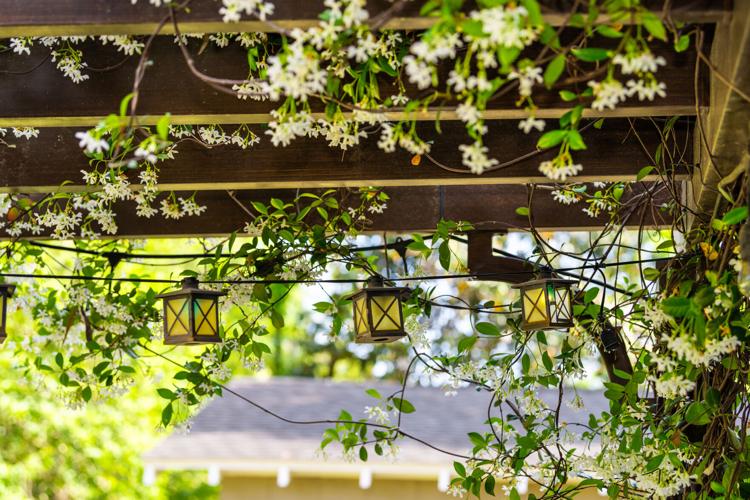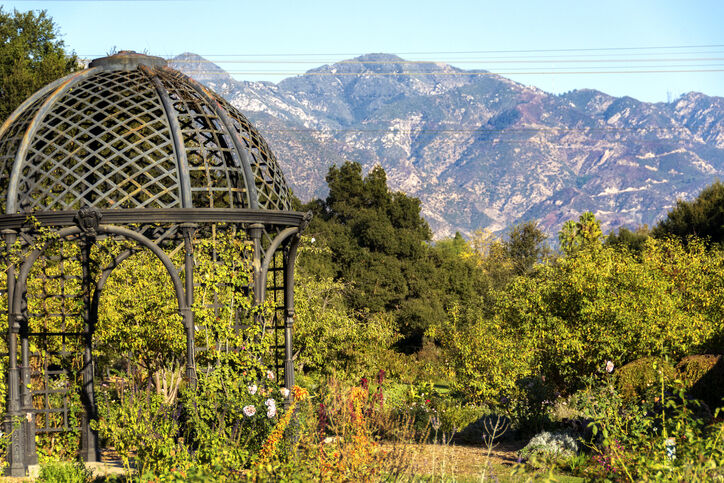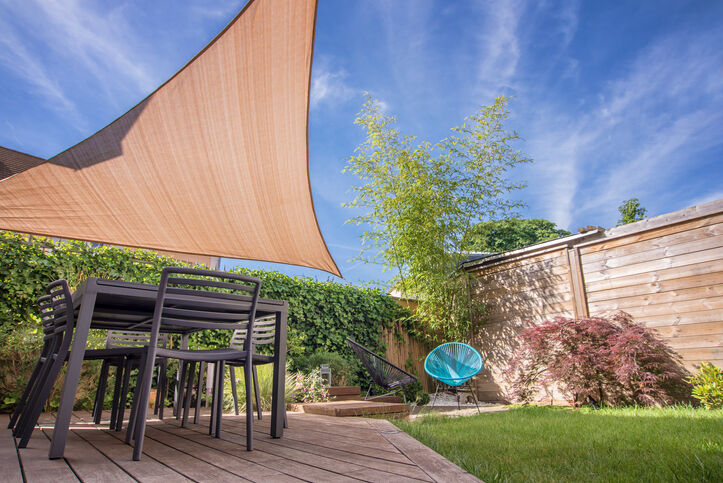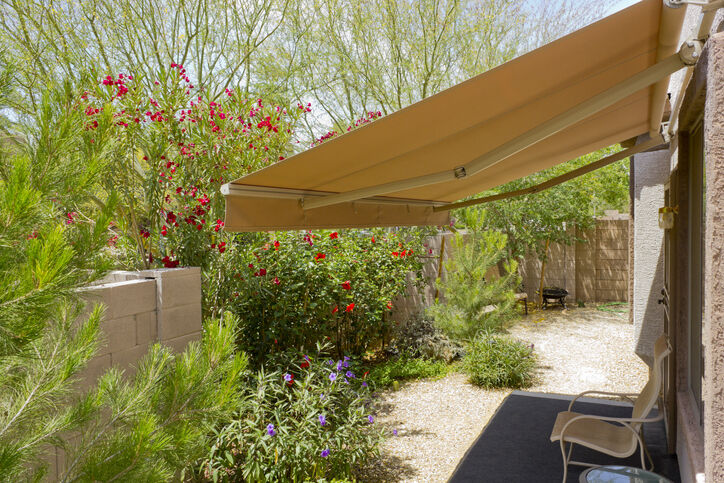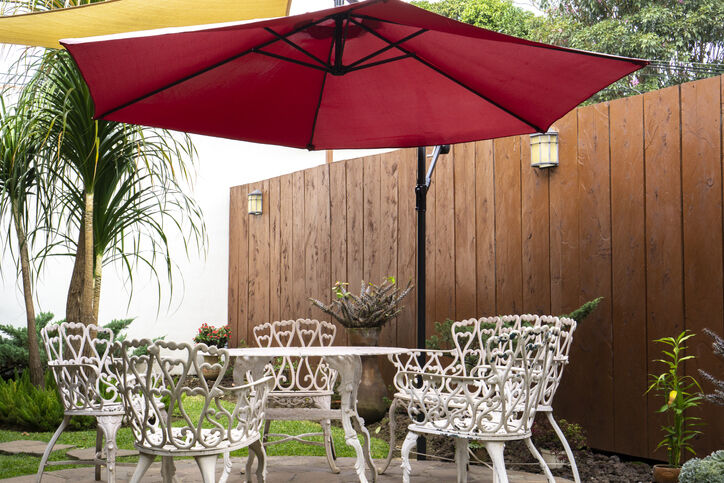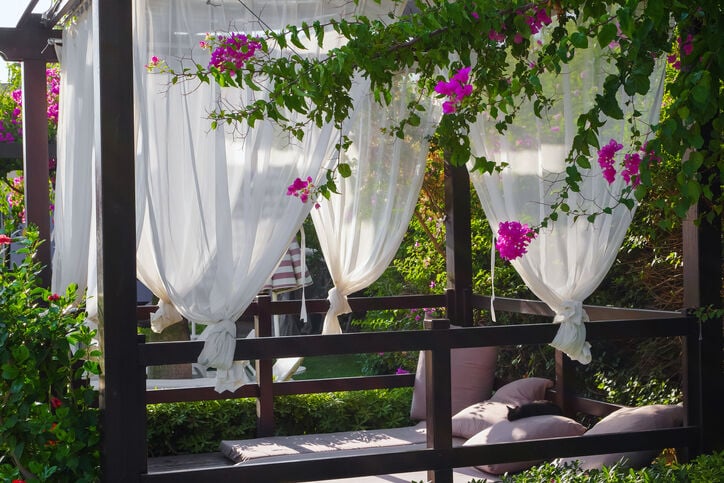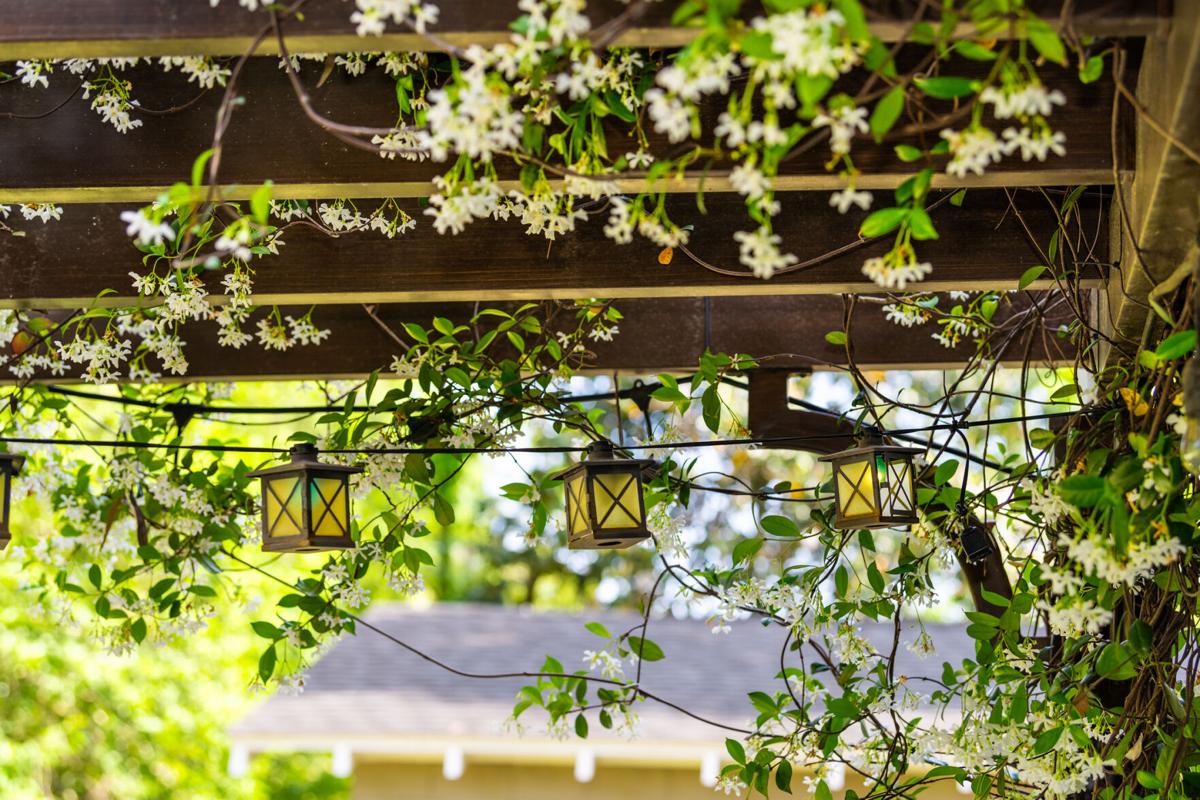The Tucson sun is relentless. Despite our cloudless skies and abundant sunny days, many of us are reluctant to spend time outside in our yards and gardens due to the heat and brightness. Some shade is always welcome, particularly now, when our spring turns rapidly into the pre-monsoon, hot, dry summer.
Besides planting trees, shade structures can also improve our ability to use our outdoor space. There are many options to choose from, and which one you pick depends on your budget, aesthetics, garden design, space and preferences.
The various shade structures in this article are great if you don’t have room in your yard for a large tree, or if you want to avoid planting large trees near your house (for example if you have solar panels on your roof that you don’t want to shade). Even if you do want to plant some trees for shade, these options can provide you with some cool space to hang out while you wait for your trees to grow.

This wrought-iron gazebo is open to the surrounding mountain views. The metalwork is conducive to growing vining plants over it if you desire more shade.
Gazebos: Gazebos tend to be hexagonal or octagonal in shape and have a fully constructed roof. Their aesthetic tends to be more Victorian than southwestern, but if you want a little freestanding shady area, this is a good option. The size will determine its functionality; some gazebos are small and only fit one or two chairs. You can purchase DIY kits online if that’s your thing. They are usually made of wood or metal, and can be fairly minimalistic if made of wrought iron.

This pergola provides a shady spot to take a nap. The bougainvillea vine nearby can be trained to grow over the roof to provide more shade.
Pergolas: These can be attached to your house or detached, and consist of a roof supported by some type of post. They can be metal, wood, sun-proof plastic, or a combination of the above. Technically, the roof is at least partially open for a structure to be considered a pergola, but many people refer to structures with solid roofs as pergolas as well. The roof can consist of a retractable shade cloth, a lattice, or wood or metal beams. In Tucson, many pergolas are covered with slats made from wood, ocotillo or saguaro ribs, which give the structure a southwestern look. Roofs that are latticed can be used for growing vines to provide additional shade. If you go for one with retractable shade cloth, you will have the option of opening it up during the cooler months. You can order these from big box home stores and put them together yourself, or have someone build it for you (a more expensive option).

This awning requires only an attachment point on the main house and can retract as needed.
Awnings: These are shade structures that are attached to your house and overhang your yard area. The great advantage of awnings is that they can be retractable, which allows you to change the shade in your yard as the seasons change. They are not easy to DIY, and you will need to talk with a specialty company to get these installed. The fabric need to be UV-resistant, and can be ordered in varying colors. You can also get awnings installed over south- and west-facing windows to reduce the amount of heat in your house.

Shade sails require little support and are relatively easy to install. Multiple shade sails can be supported by a single post.
Shade sails: These are made from a sunproof fabric and hung under tension from eyehooks attached to a house, tree, or post. The advantage of shade sails is they don’t require much supporting structure, so they are easy to fit into small spaces. They also tend to be relatively inexpensive compared to other shade structures.

This cantilevered umbrella’s base is out of the way of traffic flow while it overhangs the table. There are many types, sizes and colors of umbrellas available for every budget.
Umbrellas: Patio umbrellas are probably the most common shade structure, since they’re relatively inexpensive and do not require major construction. Nowadays, you can find lots of options: oversized umbrellas, square umbrellas, ones with lights for cool desert evenings, cantilevered ones, or plain ordinary ones that fit into the center hole of a patio table.


